Kick Off 2021 With These 5 Artists That the Artnet Gallery Network Is Watching in January
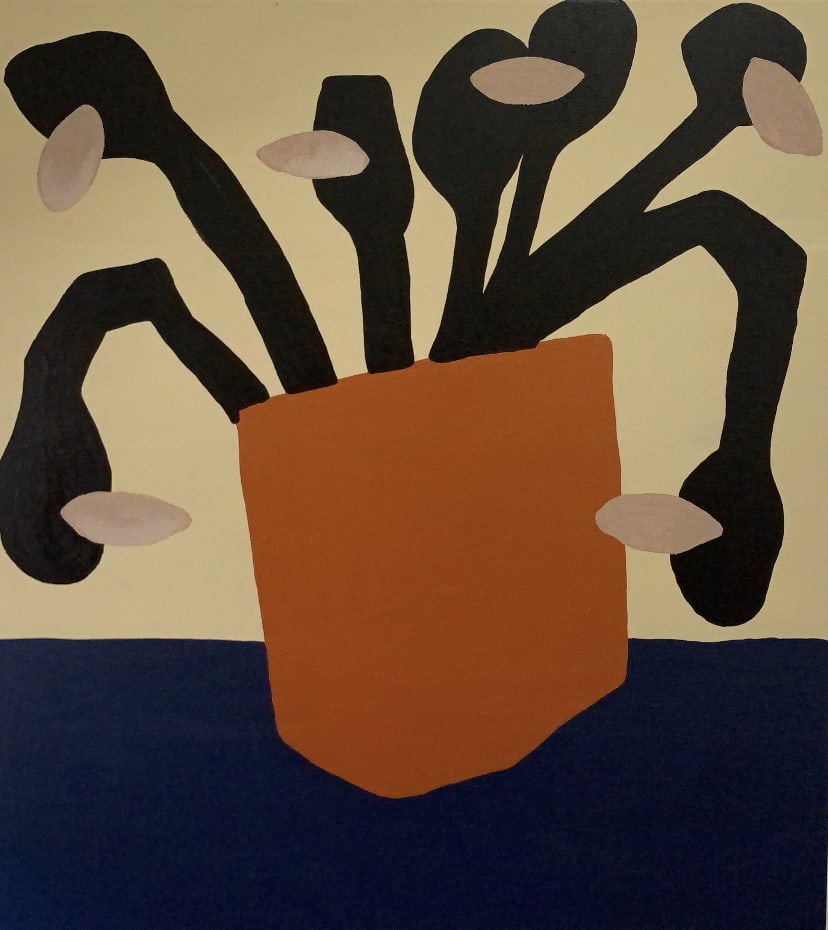

Artnet Gallery Network

At the Artnet Gallery Network, we make it our goal to discover new artists each and every month, searching through the thousands of talented artists on our website and selecting a few we find particularly intriguing right now.
Though making bold resolutions (like ones about leaving the house) might seem a tad presumptuous after last year, if one of your goals is to keep an eye on interesting talents, you can do so from home by exploring the Artnet Gallery Network and looking out for our monthly round-up of artists to watch.
This January, we’re kicking the year off with artists working all over the world, from Johannesburg to San Francisco.
Check them out below—and happy art discoveries for 2021!
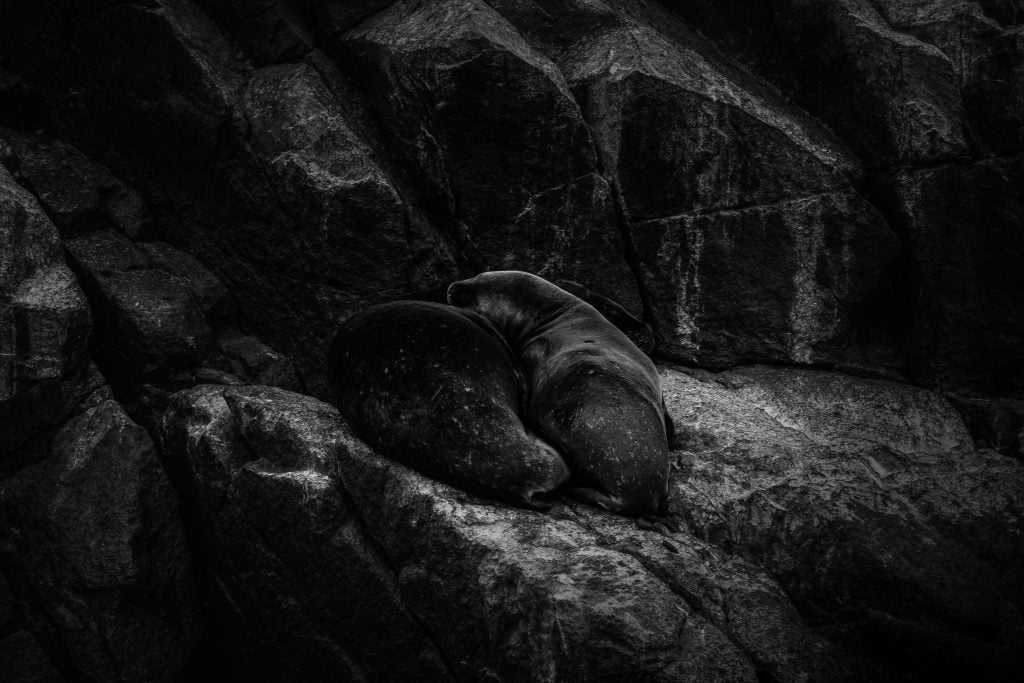
Nathan Soulez Lariviere, Alcalin (2018). Courtesy of Art Trope Gallery.
Through the end of the month, Paris’s Art Trope Gallery is hosting an exhibition of black-and-white photographs taken near or at the seaside. While that might sound idyllic, Nathan Soulez-Lariviere’s photographs offer a jolt. The images, taken on the rocky outpost of Ballestas Islands, an archipelago off the coast of southern Peru, capture birds, sea mammals, and fish with an imperious might. Alongside these, the photographer captures the relics of an industry: after the discovery of guano, a fertilizing presence, in the 19th century, Peru began to export the substance, only to have the practice regulated in the 20th century.
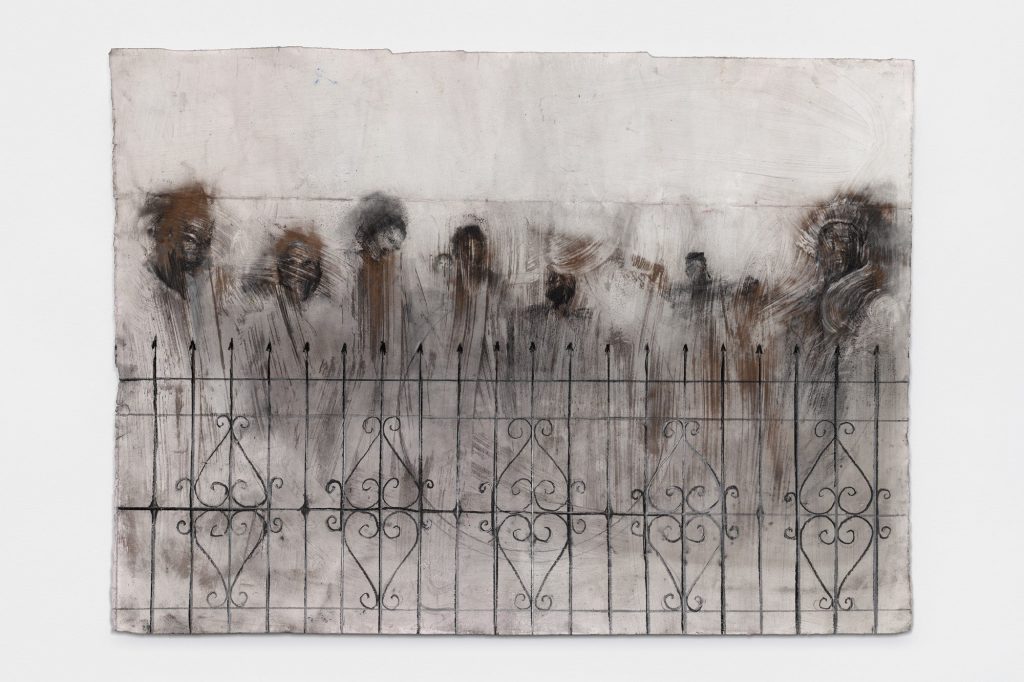
Sydney Cain, At the Corners I Miss (2020). Courtesy of Rena Bransten Gallery.
A haunting beauty suffuses the almost vaporous surfaces of Sydney Cain’s multimedia works. Made from paper and dye, graphite, powdered metals, and chalk, Cain’s works are often occupied by ghostly scenes—figures appear in groups, faces indistinguishable, as through a fog. In other works, towering gates appear looming, dream-like. Cain sees her works as a reflection on impermanence and remembrance. Her current work is based on her extensive genealogy research and how these are linked to the effects of colonialism, urban renewal, and the Black afterlife.
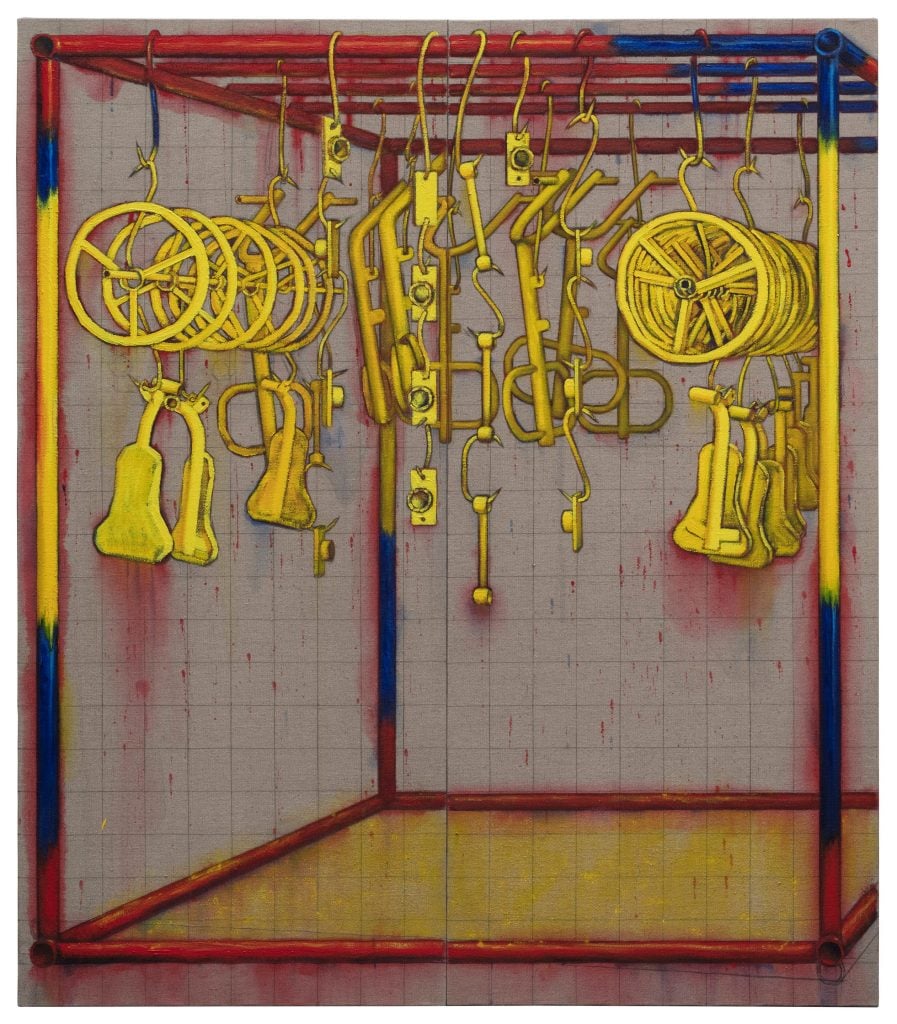
Zang Kunkun, The End or the Beginning (2019). Courtesy of Mai 36 Galerie.
Chinese artist Zang Kunkun takes cheap and cheerful materials of everyday life, be it advertising posters or discarded packaging, and reframes them in unusual and often political contexts reflective of the complexity of our global interconnectedness. In his second solo show with Mai 36 Galerie, his new series “Barnett Newman in Socialism and Mark Rothko in Socialism” delves into the history of modern abstraction and its links to the sublime, and how these modes of simplification can be a lens for understanding China’s rapid and expansive urbanization.
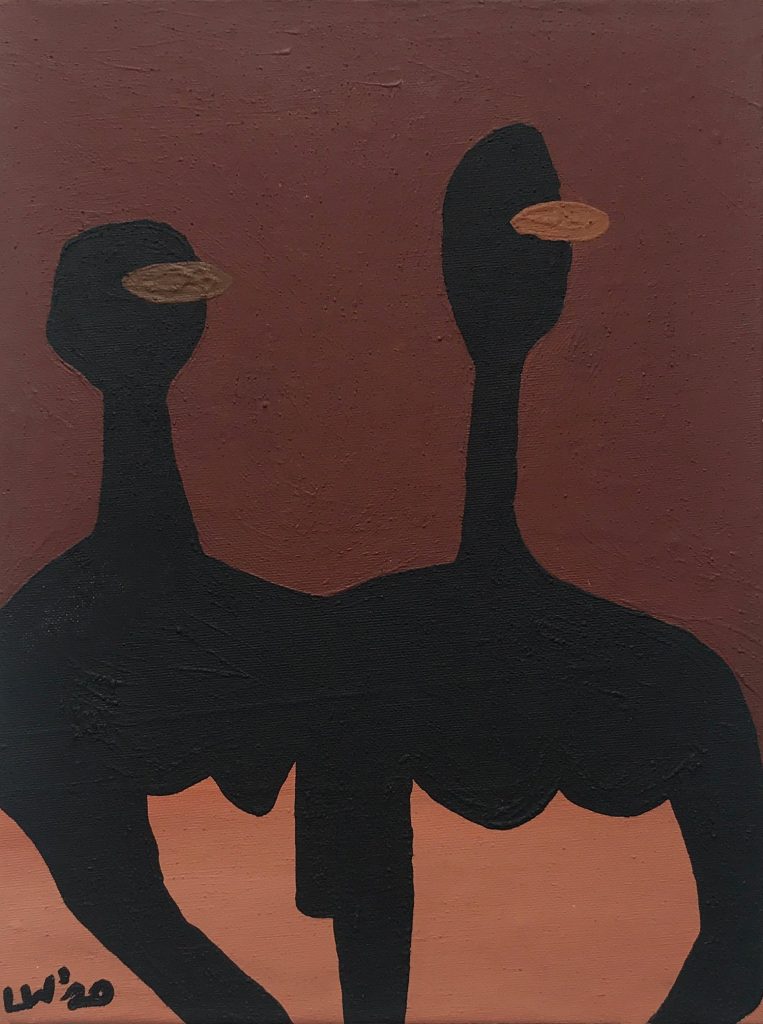
Lulama “Wolf” Mlambo, The Excursionists (2020). Courtesy of THK Gallery.
Johannesburg-based artist Lulama “Wolf” Mlambo has a striking, pared-down style that blends anthropomorphic elements with vernacular architecture, natural elements, and more. In one work, a vase appears filled with stem-like creatures that look both humanoid and botanical. Mlambo explores her themes, often rooted in the links between science, spirituality, and history, from a contemporary South African perspective, in which she acts as an almost alien-force looking into the past. Her techniques interrogate a pre-colonial African experience, with the artists engaging in smearing, scraping, and pigment techniques that were used in domestic-architecture African homes, along with references to the patterns of traditional women-made textiles.
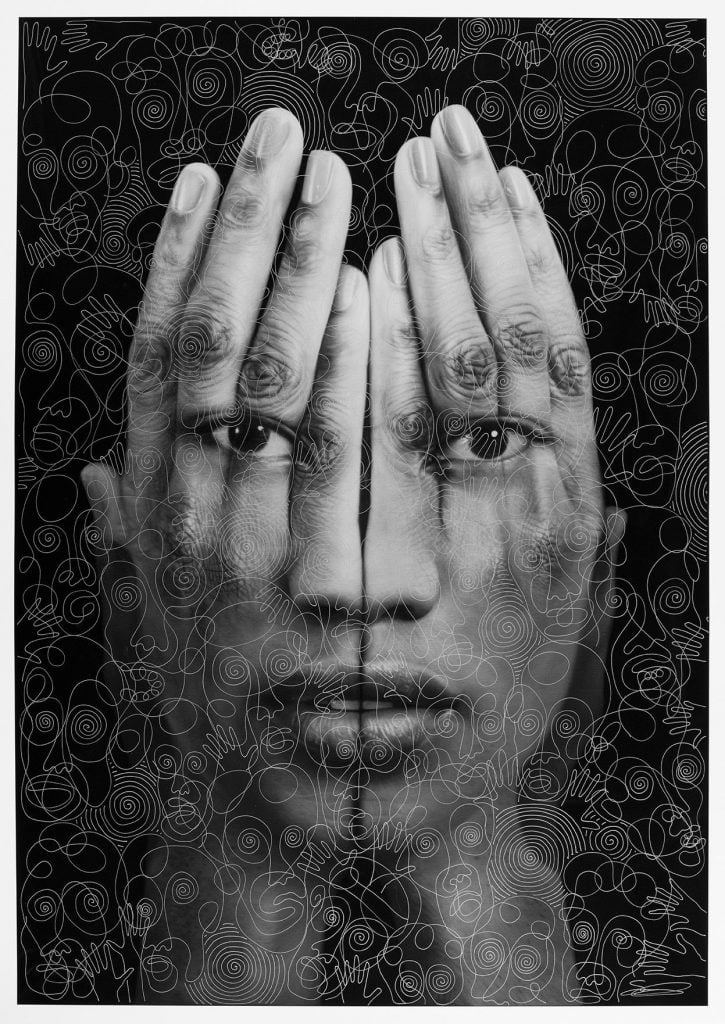
Tigran Tsitoghdzyan, Black Mirror (2018). Courtesy of Sponder Gallery.
At first glance, Tigran Tsitoghdzyan’s striking black-and-white portraits may seem like a photographic trick of superimposing two images together. The Armenia-born, New York-based artist’s works depict individual women shown with their hands over their faces—the faces themselves, however, appear on the surface of the hands as though projected onto their surface. The hyper-detailed images are not photographs, however, but monumentally scaled paintings. Tsitoghdzyan calls the series “Mirrors” and says the works are a reflection of the way people project outward onto images of women, while the women’s true identities remain obscured.